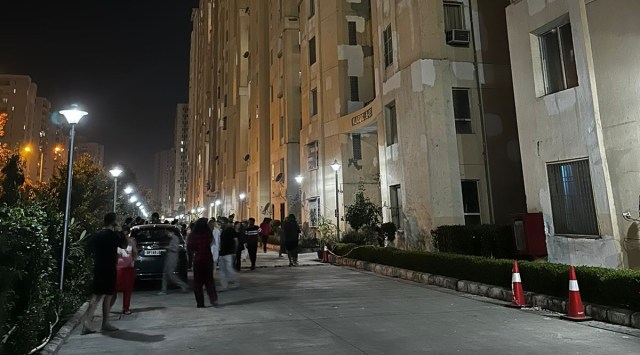Earthquake tremors felt across Delhi
The tremors in Delhi lasted several seconds, with people sharing videos of fans swaying and furniture in homes rattling.
 Delhi falls in the 'High Damage Risk Zone IV' on the seismic map.
Delhi falls in the 'High Damage Risk Zone IV' on the seismic map.As strong tremors jolted parts of North India late Tuesday evening, people across the city rushed out of their homes and on to the streets.
According to the Delhi Fire Services, calls were received from Southeast Delhi’s Jamia Nagar and East Delhi’s Shakarpur about buildings tilting due to the earthquake. Three fire tenders were rushed to the areas. No casualties have been reported so far. Fire department officials said they did not find any evidence of a tilted building on reaching Shakarpur.
Delhi falls in the ‘High Damage Risk Zone IV’ on the seismic map.
According to the National Centre for Seismology, the epicentre of the earthquake, which was of a magnitude of 6.6, was 133 kilometres from Fayzabad in Afghanistan at a depth of 156 kilometres.
The tremors in Delhi lasted several seconds, with people sharing videos on social media of fans swaying and furniture in homes rattling .
Chief Minister Arvind Kejriwal tweeted, “Strong tremors of the earthquake were felt across Delhi NCR. Hope you all are safe.”
Delhi minister Saurabh Bharadwaj also took to Twitter and said, “Huge earthquake. In our Delhi Secretariat building, my chair was shaking for 30 seconds.”
In a meeting of the Delhi Disaster Management Authority (DDMA) on Saturday, Delhi’s preparations in the event of a devastating earthquake were discussed. Chaired by Delhi Lieutenant Governor Vinai Kumar Saxena and with Chief Minister Kejriwal in attendance, the DDMA discussed earthquakes in Turkey and Syria before taking stock of the preparedness for such an eventuality in the national capital.
The L-G, who is the chairperson of DDMA, called for retrofitting of all schools, hospitals, police stations, other critical government offices and vulnerable buildings, especially in the ‘Special Area’ and Old Delhi localities, according to the Earthquake Resilient Building Code.
He had also flagged that since Delhi’s housing pattern is not in accordance with the building codes it makes the residents vulnerable and that the approaches of many colonies are extremely narrow making movement of people and vehicles almost impossible.







